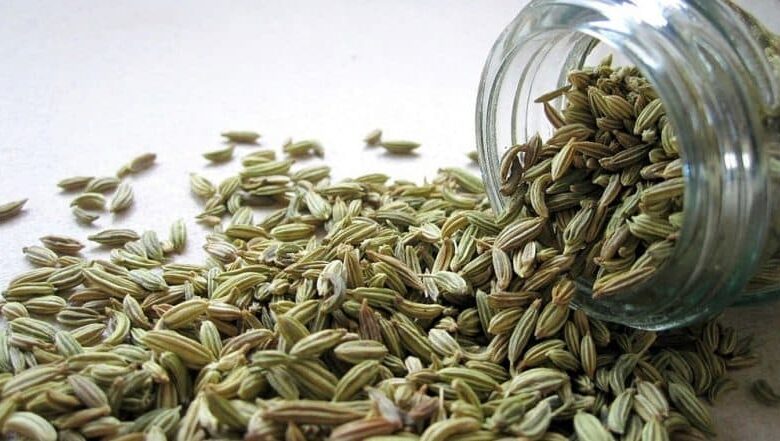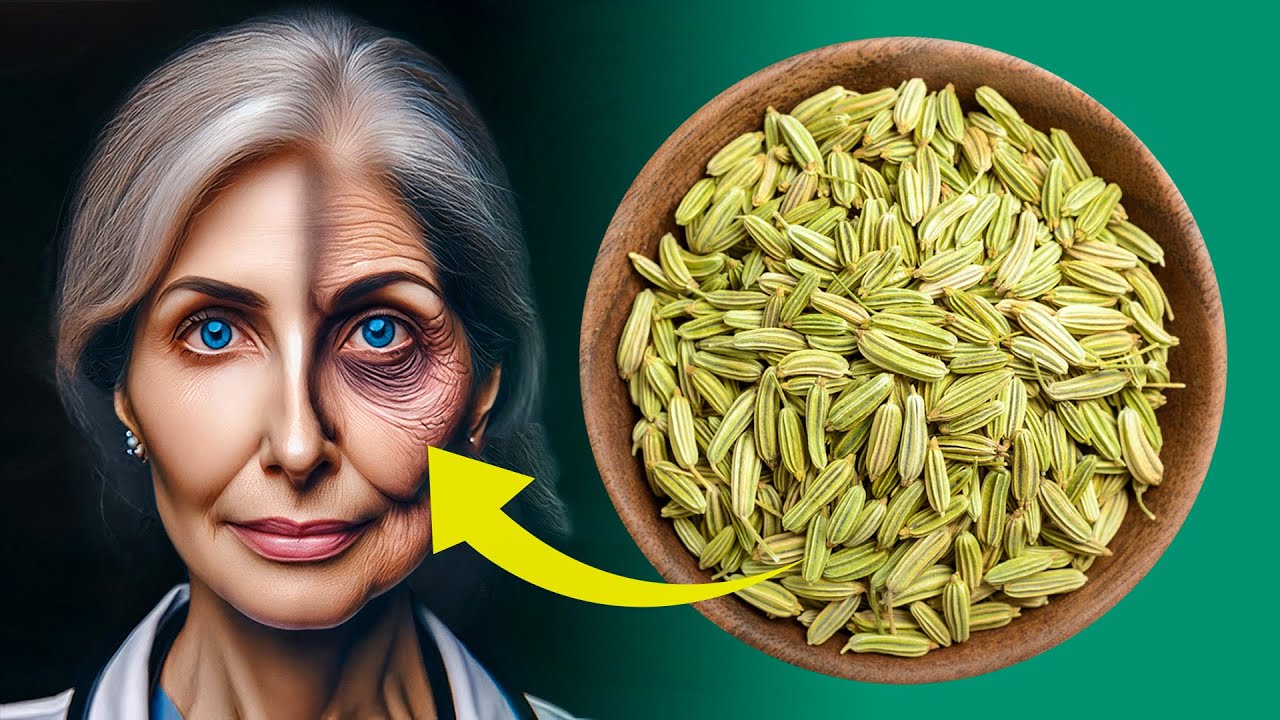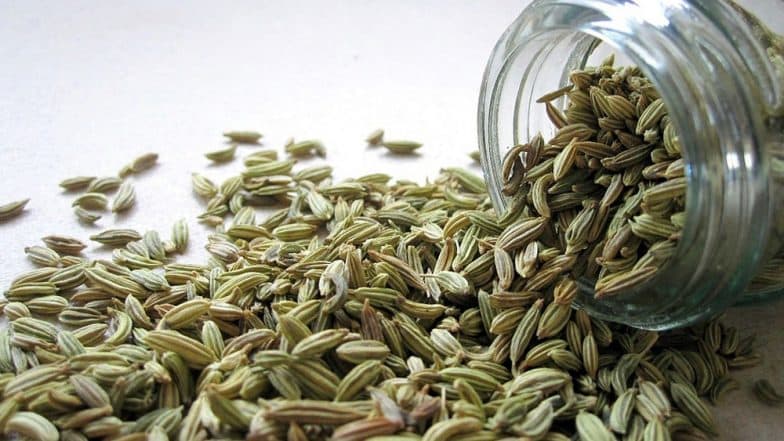
Why Should You Eat Saunf After Every Meal?
Why should you eat saunf after every meal? This seemingly simple question opens the door to a world of surprising digestive benefits. From ancient Ayurvedic practices to modern scientific understanding, saunf (fennel seeds) have long been prized for their ability to soothe the stomach, freshen breath, and even improve oral health. Let’s delve into the reasons why incorporating this humble spice into your post-meal routine could be a game-changer for your well-being.
This post will explore the science behind saunf’s digestive prowess, its role in combating bad breath, and its surprising benefits for oral hygiene. We’ll also uncover some fascinating historical uses of saunf and discuss how its traditional applications have influenced modern perspectives. Get ready to discover why this tiny seed packs such a powerful punch!
Digestive Benefits of Saunf (Fennel Seeds)
Saunf, or fennel seeds, have been a staple in traditional medicine for centuries, prized for their ability to aid digestion and alleviate various gastrointestinal discomforts. Their effectiveness stems from a combination of volatile oils, fiber, and other beneficial compounds that work synergistically to improve gut health.
Saunf’s Role in Aiding Digestion
Fennel seeds contain anethole, a compound that stimulates the production of digestive juices. This increased secretion of enzymes and acids helps break down food more efficiently, facilitating easier digestion and nutrient absorption. Furthermore, the fiber content in saunf adds bulk to the stool, promoting regular bowel movements and preventing constipation. This combined action of increased digestive enzyme production and improved bowel regularity contributes significantly to overall digestive health.
Mechanisms of Improved Gut Motility by Saunf
Saunf’s impact on gut motility is multifaceted. The fiber content acts as a natural laxative, stimulating peristalsis – the rhythmic contractions of the intestinal muscles that move food through the digestive tract. Anethole and other volatile oils in fennel seeds also possess carminative properties, meaning they help to expel gas from the digestive system, relieving bloating and discomfort.
This combined action of increased peristalsis and gas expulsion leads to improved gut motility and reduced digestive distress.
Digestive Issues Alleviated by Saunf
Saunf has shown effectiveness in alleviating a range of digestive issues. These include bloating, gas, indigestion, constipation, and heartburn. Many individuals find that consuming a small amount of saunf after meals helps prevent these issues from arising in the first place. Its gentle laxative effect is particularly helpful for those experiencing occasional constipation, while its carminative properties provide relief from uncomfortable gas and bloating.
The ability to reduce heartburn is likely due to its ability to relax the esophageal sphincter and reduce acid reflux.
Comparison of Saunf with Other Digestive Aids, Why should you eat saunf after every meal
Saunf offers a natural and gentle approach to digestive support compared to some other aids. While over-the-counter antacids can neutralize stomach acid, they don’t address the underlying causes of indigestion. Similarly, some laxatives can be harsh and lead to dependency. Saunf, on the other hand, works by supporting the natural digestive processes, promoting regularity without causing harsh side effects.
It offers a holistic approach to digestive health, addressing multiple aspects of the digestive process simultaneously.
Nutritional Comparison of Digestive Aids
| Nutrient | Saunf (Fennel Seeds) (per 100g) | Ginger (per 100g) | Chamomile Tea (per cup) |
|---|---|---|---|
| Fiber (g) | 20-25 | 2-3 | Negligible |
| Iron (mg) | 5-7 | 0.8 | Negligible |
| Potassium (mg) | 700-800 | 380-400 | Low |
| Vitamin C (mg) | Low | 5-10 | Low |
Note
Nutritional values are approximate and can vary depending on the source and preparation method. Chamomile tea’s nutritional content is minimal compared to saunf and ginger.
Saunf and Breath Freshness

Source: ytimg.com
Saunf, or fennel seeds, have long been prized not only for their digestive benefits but also for their ability to freshen breath. This isn’t just an old wives’ tale; the aromatic compounds within saunf actively combat the bacteria and volatile sulfur compounds responsible for bad breath halitosis. Let’s delve into the science and tradition behind this age-old remedy.
The refreshing scent of saunf comes from a variety of volatile compounds, including anethole, fenchone, and estragole. These aromatic chemicals effectively mask unpleasant odors and have antimicrobial properties that target the bacteria in the mouth that produce volatile sulfur compounds (VSCs), the primary culprits behind bad breath. Anethole, in particular, is a potent antimicrobial agent, inhibiting the growth of various bacteria associated with halitosis.
The combination of masking agents and antimicrobial properties makes saunf a surprisingly effective breath freshener.
Comparison of Saunf’s Breath-Freshening Effectiveness
Saunf’s effectiveness as a breath freshener compares favorably to many commercially available products. While mints and mouthwashes offer immediate, albeit temporary, relief, saunf offers a more sustained approach. The antimicrobial properties of saunf work to address the root cause of bad breath, reducing the bacterial load responsible for odor production, rather than simply masking the smell. This means the freshness provided by saunf can last longer than that of many commercial products, which rely solely on masking agents.
However, it’s important to note that while saunf is effective, it is not a replacement for proper oral hygiene. Regular brushing and flossing remain essential for maintaining optimal oral health.
Anecdotal Evidence and Traditional Practices
Across various cultures, the use of saunf for breath freshening has a long and rich history. In many parts of India and the Middle East, it’s a common practice to chew on a few saunf seeds after meals, a tradition passed down through generations. This practice isn’t merely a cultural quirk; it’s rooted in the observed effectiveness of saunf in improving breath freshness.
Many individuals report a noticeable improvement in their breath after consuming saunf, highlighting its efficacy as a natural breath freshener. Anecdotal accounts often describe a pleasant, lingering freshness that persists longer than that achieved with other methods.
Infographic: Saunf Neutralizing Odor-Causing Compounds
The infographic would visually represent the process of saunf neutralizing odor-causing compounds. Visual Elements:* Panel 1: The Problem: This panel depicts a magnified view of the mouth, showing bacteria (represented by small, colorful, irregular shapes) actively producing volatile sulfur compounds (VSCs) represented as small, noxious-looking green clouds. Text: “Bad Breath Bacteria Produce Odor-Causing Compounds”* Panel 2: Saunf’s Action: This panel shows saunf seeds (realistic depiction) releasing aromatic compounds (represented as colorful, swirling particles) like anethole, fenchone, and estragole.
So, you’re wondering why I always recommend saunf (fennel seeds) after meals? It aids digestion and freshens breath, a simple habit with big benefits! Interestingly, research suggests that what you see might affect your brain health later in life, as studies like this one exploring whether can eye test detect dementia risk in older adults are gaining traction.
But back to saunf – it’s a small, delicious way to support your overall wellbeing, starting with a happy gut!
These particles are shown interacting with the bacteria and VSCs. Text: “Saunf’s Aromatic Compounds Target Odor-Causing Bacteria”* Panel 3: Neutralization: This panel shows the bacteria becoming less active, and the green VSC clouds diminishing in size and intensity as they interact with the saunf compounds. Text: “Bacteria Inhibited, Odor Reduced”* Panel 4: Fresh Breath: This panel depicts a smiling person with fresh breath, indicated by a small, light blue cloud emanating from their mouth.
Saunf (fennel seeds) aid digestion, a crucial aspect of overall well-being, especially for kids. Managing any health condition requires a holistic approach, and sometimes that includes considering things like diet. For instance, learning about effective strategies to manage Tourette syndrome in children can help families create a supportive environment. Ultimately, incorporating simple digestive aids like saunf after meals can contribute to a child’s comfort and overall health, alongside other important management techniques.
Text: “Fresh and Clean Breath” Connecting elements: Arrows would connect the panels, illustrating the sequential process of saunf neutralizing odor-causing compounds. The overall design would be clean, informative, and visually appealing, using a color scheme that reflects the natural elements involved. A simple, clear font would ensure readability. The infographic would clearly communicate the mechanism by which saunf combats bad breath.
Saunf’s Role in Reducing Bloating and Gas
Bloating and gas are common digestive discomforts, often caused by trapped air or fermentation in the gut. Fortunately, saunf (fennel seeds) offer a natural and effective way to alleviate these symptoms. Their effectiveness stems from a unique combination of compounds that work synergistically to promote healthy digestion.Saunf contains several components that contribute to its gas-reducing properties. These include anethole, estragole, and fenchone, volatile oils known for their carminative effects.
These oils help to relax the smooth muscles in the digestive tract, facilitating the movement of gas through the intestines and reducing bloating. Additionally, saunf possesses antispasmodic properties, meaning it can help to ease muscle spasms that contribute to discomfort. The fiber content in saunf also plays a crucial role by promoting regular bowel movements, preventing the buildup of gas.
These components work together to ease discomfort and promote a more comfortable digestive experience.
Mechanisms of Action in the Digestive System
The volatile oils in saunf, such as anethole, interact with the digestive system by stimulating the production of digestive enzymes and promoting peristalsis, the rhythmic contractions of the intestinal muscles that move food through the digestive tract. This enhanced motility helps prevent the buildup of gas and reduces bloating. The antispasmodic effects of saunf further contribute by reducing muscle spasms in the intestines, a common cause of discomfort associated with gas.
The fiber content adds to this effect by promoting healthy bowel movements, preventing gas from accumulating.
Comparison with Other Remedies
While many remedies exist for bloating and gas, saunf offers a natural and readily available option. Compared to over-the-counter medications, which may have side effects, saunf presents a gentler approach. Unlike some antacids that can disrupt the natural pH balance of the stomach, saunf works by addressing the root cause of gas—impaired digestion. Compared to other herbal remedies, saunf stands out due to its readily available nature and widespread use in traditional medicine, demonstrating its efficacy over time.
Its mild flavor also makes it more palatable than some other remedies.
Optimal Consumption for Bloating Relief
Proper consumption is key to maximizing saunf’s benefits. Here’s a step-by-step guide:
- Preparation: Lightly crush a teaspoon of saunf seeds to release their essential oils.
- Infusion (Optional): Steep the crushed seeds in hot water for 5-10 minutes to create a soothing tea. This can be consumed warm or at room temperature.
- Direct Consumption: Alternatively, you can directly consume the crushed seeds after meals.
- Timing: Consume saunf immediately after meals, ideally within 30 minutes, for optimal digestive support.
- Consistency: For best results, incorporate saunf into your routine after every meal.
Saunf and its Effects on Oral Health
Saunf, or fennel seeds, have long been valued for their culinary uses and medicinal properties. Beyond aiding digestion and freshening breath, emerging research suggests that saunf may also offer benefits for oral health, contributing to a healthier mouth and potentially reducing the risk of gum disease. This stems from its inherent antimicrobial properties and other beneficial components.Saunf’s Contribution to Oral HygieneSaunf contains various compounds with potential antimicrobial properties.
These compounds actively inhibit the growth of certain bacteria known to contribute to plaque formation, gingivitis, and other oral health issues. Chewing on saunf seeds after meals can help to mechanically remove food particles lodged between teeth, thus reducing the bacterial food source. Furthermore, the essential oils present in saunf contribute to a cleaner feeling mouth and help neutralize bad breath associated with oral bacteria.
This dual action – mechanical cleansing and antimicrobial effects – makes saunf a potentially beneficial addition to a good oral hygiene routine.
Antimicrobial Properties and Impact on Oral Bacteria
The antimicrobial activity of saunf is primarily attributed to its volatile oils, particularly anethole. Studies have shown that anethole and other components of saunf oil exhibit significant inhibitory effects against various oral pathogens, includingStreptococcus mutans*, a key bacterium involved in dental caries (tooth decay). The mechanism of action involves disrupting bacterial cell membranes and interfering with bacterial enzyme activity, thereby hindering their growth and proliferation.
While more research is needed to fully elucidate the impact on a complex oral microbiome, the existing evidence suggests a positive contribution to oral health.
Potential Side Effects of Excessive Saunf Consumption Related to Oral Health
It’s important to note that while saunf generally offers benefits, excessive consumption can lead to potential side effects. While rare, some individuals may experience adverse reactions.
- Increased Sensitivity: Overconsumption of saunf could potentially increase sensitivity in teeth, particularly those with existing dental issues.
- Dry Mouth: While saunf can freshen breath, excessive consumption may lead to dryness in the mouth, creating an environment conducive to bacterial growth.
- Allergic Reactions: Although uncommon, some individuals may experience allergic reactions, such as mouth irritation or swelling, following saunf consumption.
Saunf and Traditional Medicine

Source: ytimg.com
Saunf, or fennel, boasts a rich history interwoven with traditional medicine practices across various cultures. Its use extends far beyond modern dietary supplements, rooted in centuries of experience and observation of its beneficial effects on digestion and overall well-being. Understanding this historical context provides valuable insight into the continued relevance of saunf in contemporary health and wellness routines.The incorporation of saunf into post-meal rituals isn’t a recent trend; it’s a testament to its long-standing role in traditional healing systems.
Its use transcends geographical boundaries, reflecting a shared understanding of its inherent properties.
Traditional Uses of Saunf Across Cultures
The versatility of saunf is evident in its diverse applications throughout history. In Ayurvedic medicine, a traditional Indian system, saunf has been employed for centuries as a digestive aid, carminative (reducing gas), and to alleviate bloating. It’s frequently included in herbal remedies for respiratory issues and even used as a mild laxative. Similarly, in traditional Chinese medicine, fennel seeds are valued for their ability to improve digestion and reduce abdominal discomfort.
Across the Mediterranean, saunf has been a staple in culinary practices, often added to dishes not only for its flavor but also for its perceived health benefits. These diverse applications highlight the widespread recognition of saunf’s medicinal properties.
Historical Practices Involving Saunf and Post-Meal Consumption
The practice of consuming saunf after meals has deep historical roots. Ancient texts and traditional practices across various cultures document the inclusion of fennel seeds as a post-prandial digestive aid. For example, in many Middle Eastern and South Asian households, offering saunf after a meal is a customary gesture of hospitality and a means of promoting comfortable digestion.
This isn’t merely a cultural quirk; it reflects a practical understanding of saunf’s ability to alleviate common digestive issues that often arise after eating. The ritualistic nature of this practice underscores its significance within these cultural contexts, highlighting its integration into daily life for centuries.
Historical Context of Saunf as a Digestive Aid
The historical use of saunf as a digestive aid is linked to its observed effects on the digestive system. Anecdotal evidence, passed down through generations, supported its effectiveness in relieving gas, bloating, and indigestion. This empirical evidence, accumulated over centuries, formed the basis for its widespread adoption in traditional medicine systems. The lack of advanced scientific tools didn’t hinder the recognition of its benefits; instead, it led to a deep understanding of its properties through direct observation and practical application.
This long history of observed efficacy contributed significantly to its continued use and eventual scientific investigation.
Influence of Traditional Practices on Modern Understanding
Traditional practices involving saunf have significantly influenced modern scientific research. The historical observations and empirical evidence provided a foundation for modern studies investigating its potential benefits. These studies have validated many of the traditional uses, confirming the presence of compounds in saunf that contribute to its digestive and other health-promoting properties. The continued relevance of saunf in modern health and wellness is a direct result of the long history of its use and the scientific validation of its traditional applications.
The integration of traditional knowledge with modern scientific methodologies has enriched our understanding of saunf’s therapeutic potential.
Last Point: Why Should You Eat Saunf After Every Meal

Source: latestly.com
So, there you have it – a compelling case for incorporating saunf into your daily routine. From aiding digestion and freshening breath to potentially boosting oral health, the benefits are numerous and well-documented, both traditionally and scientifically. While it’s not a magic bullet, adding a small amount of saunf after meals is a simple, accessible, and potentially transformative addition to your wellness journey.
Give it a try and experience the difference for yourself!
Essential FAQs
Is it okay to eat saunf every day?
Yes, moderate consumption of saunf is generally safe for daily use. However, excessive consumption might lead to some side effects like mouth irritation or allergic reactions in some individuals.
How much saunf should I eat after a meal?
A teaspoonful of saunf seeds is usually sufficient. You can adjust the amount based on your preference and tolerance.
Can saunf interact with any medications?
While generally safe, saunf might interact with certain medications. If you are on any medication, it’s best to consult your doctor before making significant dietary changes.
What if I don’t like the taste of saunf?
You can try chewing saunf with a few drops of lemon juice or honey to mask the taste. Saunf is also available in tea form or as a supplement.
